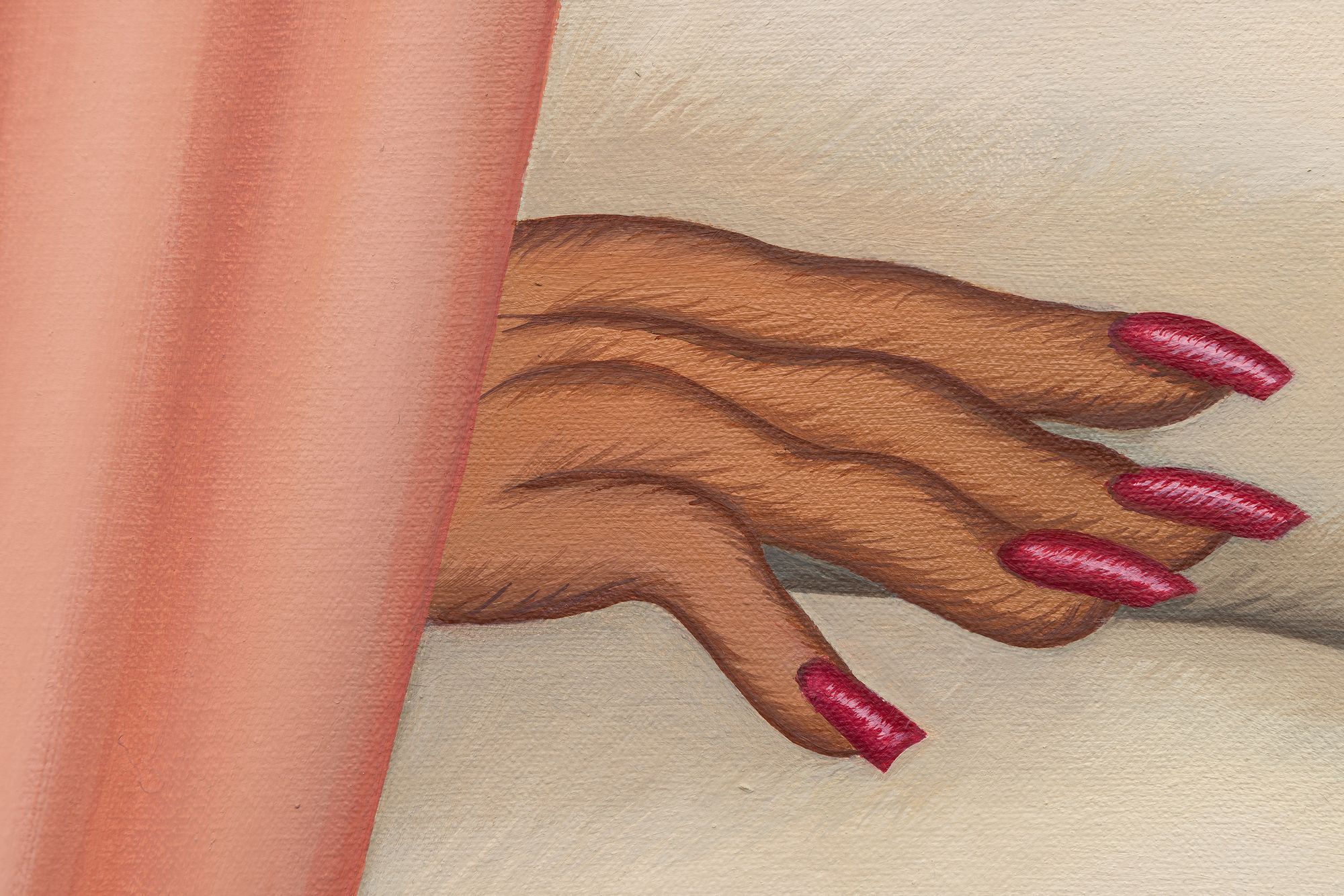JULIE CURTISS (b. 1982)










Provenance
Private Collection, CaliforniaPrice475,000
“D'apres l'Olympia” epitomizes Curtiss's painterly approach to 21st-century sexuality, combining a distinctive yet referential visual lexicon that has earned her international acclaim. By destabilizing the art historical trope of the female nude and reinterpreting Manet's iconic painting of the same name, Curtiss melds elements of French modernism with the graphic sensibilities she developed after moving to Tokyo in 2006, where she honed her signature comic book-like aesthetic. The large red shoes—a striking departure from Manet's original—introduce a sense of humor, simultaneously evoking pop-cultural references while critiquing stereotypical femininity. These oversized, vivid shoes might symbolize the exaggerated expectations placed upon women or serve as a playful nod to the absurdity of societal norms. While her admiration for Manet is evident, it is Curtiss's ability to merge these historical references with contemporary concerns and aesthetics that makes “D'apres l'Olympia” a powerful commentary on the evolving nature of female.


